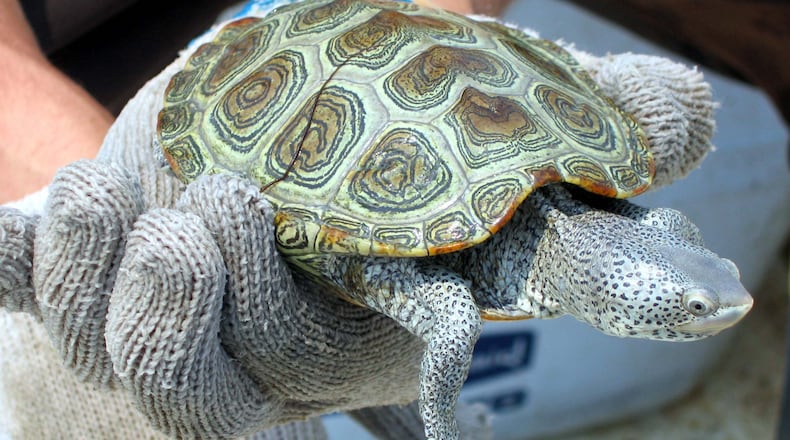The diamondback terrapin — a turtle about the size of a small dinner plate — is the only reptile exclusively adapted to life in Georgia’s coastal salt marshes, which are harsh environments for most creatures.
The little terrapin has many devoted admirers. My friend Whit Gibbons, a retired University of Georgia herpetologist, says it is his favorite wild animal. “Imagine a reptile with the dreamy eyes of a golden retriever and the unassuming face of a manatee,” he wrote about the terrapin. “Add the docile temperament of a lamb and the beauty of a seashell.”
A sure sign of spring on the coast used to be dozens of terrapins poking their thumb-size heads out of tidal creeks in March as they emerged from winter slumber.
But diamondback terrapins have vanished from many of those creeks — not only in Georgia but in other coastal areas as well. In part, their alarming decline is due to the same adversities — habitat loss, pollution, marsh destruction, overfishing — facing many other marine creatures. In addition, many female terrapins are crushed to death by automobiles in spring when the animals try to cross barrier island causeways (such as Tybee Island’s) to lay eggs. Thousands more terrapins die when they become accidentally ensnared in crab traps and drown.
Now, add another hazard — climate change. Last month, the Endangered Species Coalition, a national group, included the diamondback terrapin in its “Last Chance” report that describes the plights of 10 imperiled animal and plant species that now face the additional threat — directly or indirectly — of climate change.
“Warming conditions in the diamondback terrapin’s habitat may throw generations out of evolutionary balance, as the sex of the young is determined by sand temperature during incubation — a warmer nest produces more females,” said the report. “And since diamondbacks live in brackish water, they are sensitive to sea level rise, which may change the ratio of salt to fresh water beyond what they can tolerate.”
Still, there’s hope. Several coastal groups are working to reduce the threats to terrapins and save the species from extinction.
IN THE SKY: From David Dundee, Tellus Science Museum astronomer: The moon will be first quarter Sunday. Venus and Mars are low in the east around dawn. Jupiter and Saturn are low in the west at dusk.
Charles Seabrook can be reached at charles.seabrook@yahoo.com.
About the Author
Keep Reading
The Latest
Featured


